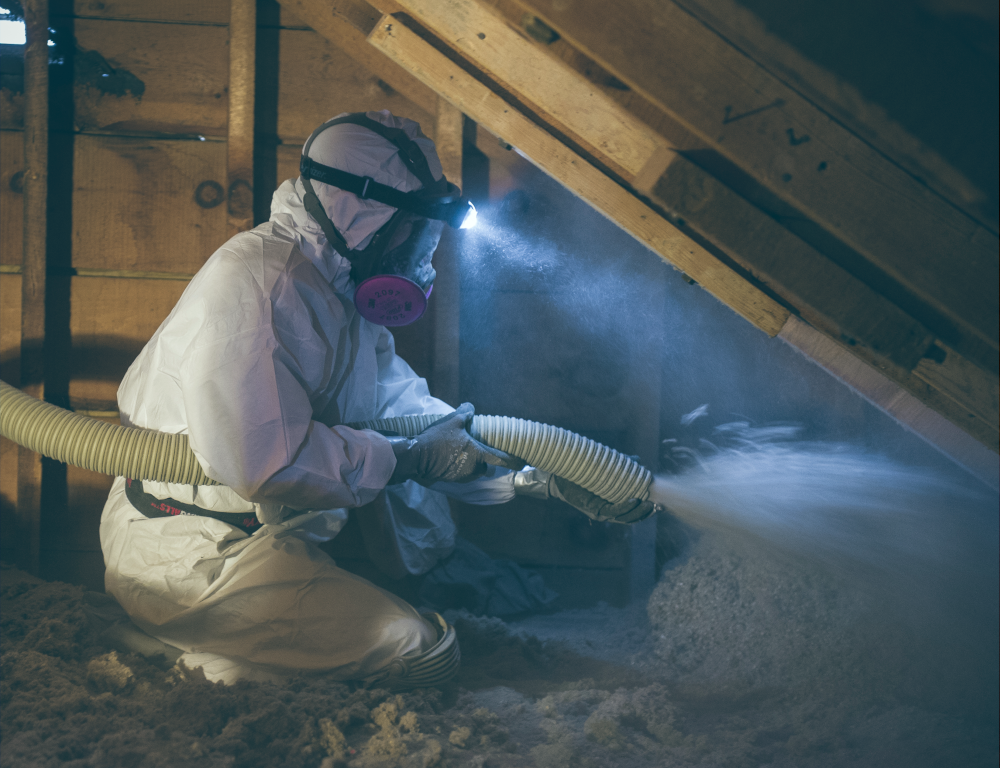The Role of Energy Testing in Attaining an Airtight Remedy for Your Home
Power screening is crucial for homeowner seeking to produce a closed environment. It recognizes air leaks and inadequacies that can endanger energy performance. Typical culprits consist of gaps around home windows and doors. Making use of techniques like blower door examinations and thermal imaging, homeowners can obtain understandings into their residential or commercial property's vulnerabilities (energy testing). Understanding these searchings for is crucial. What actions should be taken once air leakages are identified? The answers hold the trick to improved convenience and financial savings
Understanding Power Screening and Its Importance
Power testing plays a crucial role in examining the airtightness of structures and frameworks. By determining air leak, this approach supplies vital insights right into a home's power performance, thermal comfort, and overall efficiency. Airtight buildings lower energy usage, ensuring that cooling and heating systems run successfully. This screening process generally includes techniques such as blower door tests, which create a controlled setting to recognize unintentional air pathways.Understanding the relevance of energy testing expands past conformity with structure codes; it promotes a positive method to sustainability. Determining air leaks early can result in timely remediation, ultimately boosting interior air high quality and decreasing energy prices. In addition, power testing adds to the long life of structure materials by reducing wetness accumulation and associated damage. As awareness of environmental influence increases, power screening becomes an important device for property owners and builders going for high-performance homes.
Usual Resources of Air Leaks in Properties
Identifying common resources of air leaks is essential for enhancing a home's energy performance. These leaks commonly occur in different areas of a structure, significantly impacting cooling and heating costs. Usual offenders include gaps around doors and home windows, where seals might degrade over time. Furthermore, electric outlets and buttons can produce pathways for air exchange otherwise correctly shielded. Attics and cellars are likewise constant resources, especially where walls meet the roof or the foundation. Various other potential leak factors consist of plumbing infiltrations, airing vent systems, and the areas surrounding smokeshafts. Moreover, older residential properties may deal with broken down building materials, raising susceptability to air seepage. By recognizing these typical resources, homeowner can take positive actions to secure leaks, therefore improving total energy performance and comfort within their rooms. Dealing with these issues is a crucial part of establishing an impermeable option for any type of residential or commercial property.
Approaches of Power Screening: Blower Door and Thermal Imaging
Efficient energy testing techniques, such as blower door tests and thermal imaging, play a crucial duty in detecting air leakages within a property. The blower door test includes pressurizing or depressurizing a building to determine air movement and identify leaks. An adjusted follower is set up in an exterior entrance, and the resulting pressure difference highlights locations of unwanted air seepage. This approach quantifies the general airtightness of the structure.Thermal imaging complements blower door examinations by aesthetically finding temperature variations on surface areas, exposing covert air leaks. Infrared electronic cameras record warm loss or gain, enabling precise recognition of trouble locations, such as inadequately insulated walls or voids around doors and windows. energy testing south carolina. Together, these approaches give a complete evaluation of a residential property's power performance, allowing homeowner to attend to air leakages efficiently and improve general efficiency
Benefits of Identifying Air Leaks
Determining air leakages uses significant benefits for energy performance and indoor convenience. By sealing these leakages, structures can minimize power consumption, leading to reduced utility expenses and a reduced carbon footprint. Furthermore, boosted airtightness adds to a much more stable interior atmosphere, boosting total comfort for owners.
Energy Effectiveness Improvements
Spotting air leakages is important for improving energy effectiveness in structures. Determining these leakages enables homeowner to deal with locations where conditioned air escapes or unconditioned air enters, leading to considerable power cost savings. By securing gaps and fractures, structures can keep a consistent temperature, lowering the need on home heating and cooling down systems. This not just lowers energy expenses but additionally decreases the ecological effect connected with boosted power usage. Furthermore, energy performance renovations add to a structure's general sustainability, making it a much more appealing choice for eco-conscious purchasers or occupants. Eventually, focusing on air leak detection and removal assists enhance energy usage, advertises liable source administration, and supports long-term economic benefits for home owners.

Boosted Indoor Comfort
Attending to air leakages not just leads to energy savings however likewise substantially boosts indoor comfort. When air leaks are successfully identified and sealed, temperature guideline within a residential or commercial property comes to be more effective. This results in constant interior temperature levels, eliminating cool drafts in winter season and locations in summer season. Enhanced insulation additionally lowers noise contamination from outside, developing a quieter and more peaceful living environment. Additionally, improved air high quality is achieved by decreasing the infiltration of outside toxins, irritants, and humidity, adding to the general well-being of residents. Consequently, property owners experience a more pleasant ambience, cultivating leisure and efficiency. Inevitably, acknowledging and correcting air leaks is vital for achieving ideal interior comfort throughout the year.
How Power Testing Enhances Convenience and Indoor Air Top Quality
Energy screening plays a vital role in boosting temperature regulation within interior spaces, ensuring a comfy and consistent atmosphere. By sealing and recognizing air leaks, it additionally considerably reduces the infiltration of toxins, thus boosting indoor air high quality. This dual effect cultivates general health for residents.
Boosted Temperature Law
Reliable temperature guideline significantly contributes to both comfort and interior air quality, making it a crucial emphasis for contemporary building design. Power screening plays a crucial role in accomplishing this policy by identifying areas where heat loss or gain takes place, permitting for targeted enhancements. By ensuring an impermeable structure envelope, energy testing assists preserve regular interior temperature levels, decreasing the requirement for too much home heating or cooling. This stability improves passenger convenience, as variations in temperature level can lead to discomfort and discontentment. Furthermore, reliable temperature level control can improve indoor air high quality by lowering the threat of condensation and mold and mildew development, which flourish in unequal temperature level problems. Energy testing is important for optimizing temperature level monitoring in household and business residential properties. Industrial Decreased Contaminant Infiltration
While lots of aspects add to indoor air quality, lowered toxin infiltration stands out as a necessary element that energy screening can greatly improve. Power screening recognizes air leaks and weak points in a building's envelope, which might permit outdoor pollutants, allergens, and moisture to enter indoor areas. By sealing these leakages, homes can successfully limit airborne contaminants, bring about a much healthier setting. Boosted airtightness not just boosts convenience yet additionally decreases the worry on heating and cooling down systems, leading to power cost savings. Additionally, minimized pollutant seepage fosters better total health for passengers, as cleaner air advertises breathing wellness and reduces allergic reaction signs. Subsequently, energy screening plays an essential role in developing both an energy-efficient and health-conscious space.
The Financial Impact of Power Testing on Energy Expenses

Actions to Take After Power Screening Results
When power screening results remain in, house owners should meticulously assess the findings to figure out one of the most effective course ahead. The primary step entails determining the locations that call for improvement, such as air leakages or insulation shortages. House owners should then prioritize fixings based on the extent of the issues and their possible effect on power efficiency.Next, it is suggested to speak with specialists that concentrate on power efficiency to create an extensive action plan. This might consist of solutions like sealing voids, adding insulation, or updating windows and doors.After carrying out the necessary adjustments, a follow-up power test can determine the performance of the repair work. Constant monitoring is also necessary to guarantee that the residential property preserves its airtight condition in time. By adhering to these actions, property owners can significantly enhance their residential or commercial property's power efficiency, leading important site to decreased energy costs and enhanced convenience.
Regularly Asked Concerns
Exactly how Usually Should I Conduct Power Evaluating on My Home?
The regularity of energy screening ought to typically be every few years, or following significant renovations. Normal analyses help determine performance improvements and guarantee that the residential property preserves optimal power performance over time, adjusting to changing problems.
Is Energy Screening Necessary for New Constructions?
Energy screening is vital for new buildings, as it determines possible air leakage and insulation problems - energy testing north carolina. Applying these tests guarantees energy effectiveness, improves interior convenience, and fulfills building regulations, ultimately resulting in long-lasting price financial savings
Can I Carry Out Power Screening Myself?
Power screening usually needs specialized devices and knowledge. While some home owners may attempt basic evaluations, specialist services guarantee precise outcomes and reliable recognition of issues, eventually bring about far better energy efficiency and comfort in living rooms.
What Is the Price of Specialist Power Testing Providers?
The price of specialist energy testing solutions generally ranges from $300 to $1,500, depending on building dimension, intricacy, and place. Property owners should take into consideration prospective energy financial savings when reviewing the financial investment in these services.
How Lengthy Do Power Testing Outcomes Typically Last?
Energy screening results typically remain legitimate for one to three years, relying on variables like building adjustments and ecological modifications. Regular updates are advised to ensure precision and maintain efficient energy efficiency requirements. Reliable energy screening approaches, such as blower door examinations and thermal imaging, play a vital role in diagnosing air leakages within a property. Identifying these leakages enables property owners to deal with areas where conditioned air gets away or unconditioned air goes into, leading to significant power cost savings. Energy testing recognizes air leakages and weak points in a structure's envelope, which might enable outside pollutants, irritants, and wetness to get in indoor rooms. As house owners significantly seek to lower official statement their energy expenditures, the role of power screening becomes essential in recognizing ineffectiveness and leaks. Homeowners should after that focus on fixings based on the intensity of the concerns and their prospective effect on power efficiency.Next, it is suggested to seek advice from with specialists that specialize in power efficiency to design a thorough action plan.